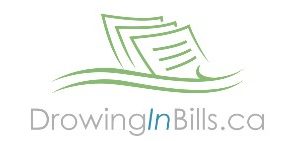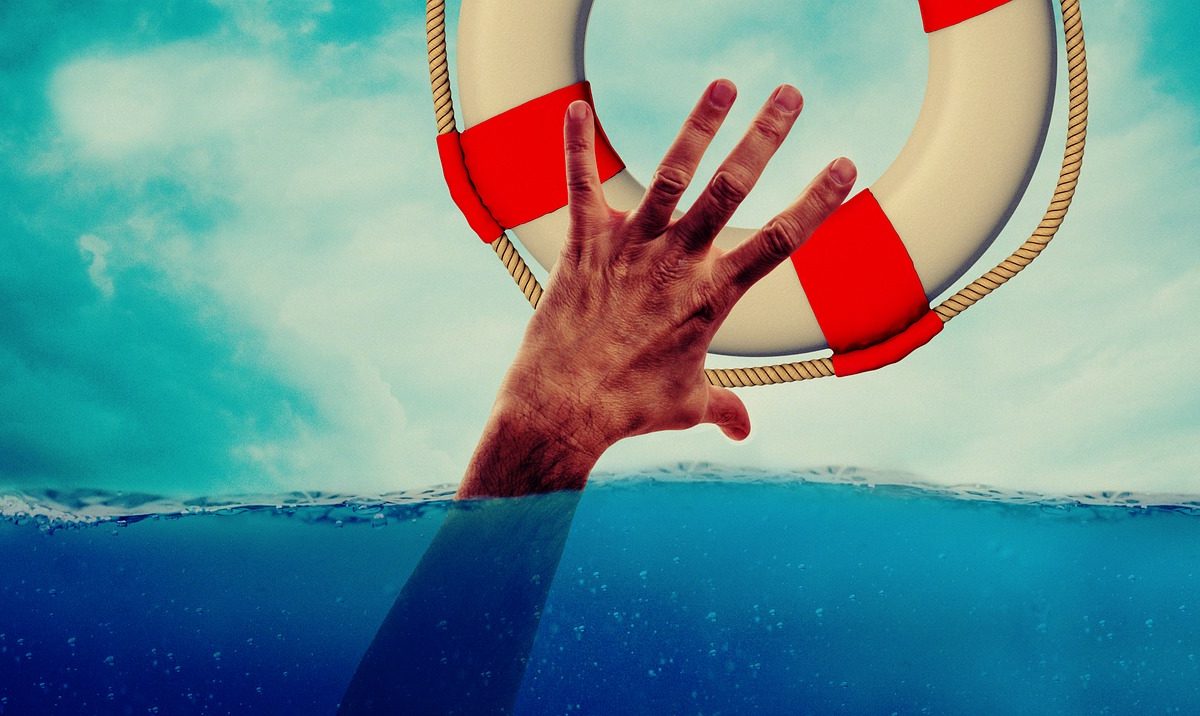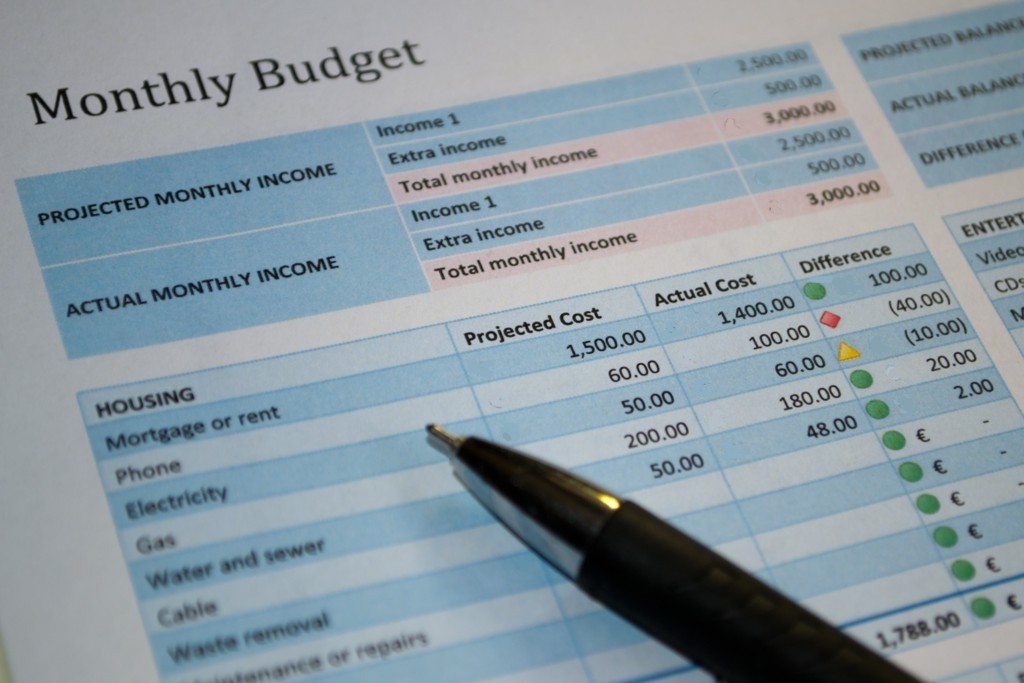Even if you have a budget in place and you’ve balanced your expenses against your income, credit card bills have a way of piling on to weigh you down. When this happens, traditional monthly payments often do little to pay down your balances. You may need a specialized strategy to reduce your debt, so the bills stay manageable.
Why are credit card bills so problematic?
When it comes to revolving credit, minimum payment requirements are not designed to be an efficient way to pay off a balance. In fact, they’re really designed to keep you in debt as long as possible, since this maximizes the creditor’s revenue. They have as many months as possible to apply interest charges, which is how they make a profit.
Credit cards also come with the added issue of high interest rates. Depending on your credit score, you may have interest rates that are 20% or above. At that high of a rate, roughly two-thirds of every minimum payment you make goes to cover accrued monthly interest charges.
For example, let’s say you have a balance of $5,000 on a credit card with 20% APR. If your minimum payment requirement is 2.5 of your balance, your minimum payments would be $125.
It might seem like you can knock the debt out in a fairly reasonable amount of time. But in reality, it would take over 21 years to pay off the debt.
Looking for help with your Credit Card Debt?
Call (844) 780-4286
That’s because out of your $125 minimum payment, over $83 would go to cover accrued monthly interest charges. You pay off less than $42 of the actual debt you owe. You’d pay over $8,600 in interest charges to pay off $5,000 in debt. In other words, you pay more to cover interest charges than what you charged.
This means that if you want to pay off credit card balances efficiently, you can’t rely on minimum payments. You need a better strategy.
Reducing debt within your budget
In some cases, you may be able to use your budget to develop a strategy that reduces your balances efficiently. This involves cutting expenses to free up as much free cash flow as possible. Then you use that money to make larger payments on one debt at a time until it is paid off. There are two basic strategies that you can use to do this.
Debt avalanche – start at the highest point, then come down quickly
The first method of reducing credit card debt is the most cost-effective. You prioritize your balances for repayment based on APR. You pay off the highest APR debt first, then the next highest and on down until you reach the bottom and become debt-free.
Here’s how it works:
- Review your budget to temporarily cut or cut back as many expenses as possible.
- Check your credit card statements and write down the current balance and APR of each debt you owe.
- Prioritize the debts for repayment, ordering them from highest to lowest APR.
- Each month, you should make the minimum payment requirement on all of your credit card bills, except for the debt with the highest APR.
- For that debt, you make the largest payment possible, so you can pay off the balance as quickly as possible.
- Once you finish paying off that balance, it eliminates one bill you need to pay.
- Then you move onto the debt with the next highest APR and repeat the steps.
- You continue this process until all of your balances are paid off.
Debt snowball – start small, then roll up to gain momentum
If you see that your highest APR debts also have your biggest balances, the avalanche method may not work. It may take too long to eliminate the first balance, which can be extremely demotivating.
In this case, you may be better off using the snowball method of debt reduction. In this strategy, you follow the same steps listed above. However, at step 3, you prioritize the debts from lowest to highest balance. So, you pay off the lowest balance first.
This method helps you gain momentum and motivation to knock down your largest balances. You get a few easy wins by paying off your lowest balances. That eliminates a few small bills, so you can focus on the biggest balances with a little more financial power.
Looking for help with your Credit Card Debt?
Call (844) 780-4286
Solutions for paying off credit card balances faster
If you only owe a few thousand dollars between a few credit cards, then the above methods may work effectively to help you. However, if you owe more than $3,000, then debt reduction tactics may not be effective. In this case, you may need a solution that will make it faster and easier to become debt-free.
This usually involves finding a way to reduce or eliminate the interest charges applied to your balance every month. This will allow you to focus your monthly payments on paying off the principal – that’s the actual debt you owe.
Several solutions can do this. Two of them you can use on your own, as long as you have a good credit score and the right amount of debt. These solutions won’t damage your credit score as long as you keep up with the payments. The last solution requires professional help and will cause some credit damage.
Option 1: Transferring your credit card balances
The first option you can use to minimize interest charges is to open a balance transfer credit card account. This is a special type of credit card that’s specifically designed to pay off existing debt.
Balance transfers offer low APR on debt that you transfer from other accounts. If you have a good or excellent credit score, you can even qualify for a 0% APR period when you first open the account. This allows you to pay off your debt interest-free for up to 6-18 months, depending on your credit score and the card.
The 0% APR period is what makes these cards so beneficial. The goal should be to pay off the transferred balances in full before the 0% APR period ends.
This means that you should total up your existing balances and then see how big your payments would need to be to pay off the balance in 6, 12 or 18 months. See if you have the money available in your budget to make payments in that amount. If so, then this could be the solution you need.
Make sure to shop around for a balance transfer card that offers the 0% APR period you would need. Additionally, once you transfer your existing balances, make sure not to make any new charges on your existing cards. Otherwise, you can end up with more debt instead of less!
Option 2: Using a debt consolidation loan
Another option is to use a debt consolidation loan to pay off your credit card balances. Loans offer two big advantages over credit cards:
- They tend to have lower interest rates.
- The monthly payments are installments, so you know exactly how much you need to pay each month.
A debt consolidation loan is an unsecured personal loan. You use the money from the loans to pay off your credit cards and other existing debts. This leaves only the loan to repay.
This option also requires you to have a good or excellent credit score, so you can qualify for the lowest interest rate possible. You need an interest rate on the load that’s significantly less than the APR on your credit cards. Otherwise, you won’t get the benefit of consolidating. In most cases, you want to aim for APR of 10% or less.
Most personal loans have a term of 12 to 48 months. The term you choose will also determine your monthly payment.
- A shorter-term will allow you to save money overall because there will be fewer months to apply interest charges. However, this will mean higher monthly payments.
- A longer-term will lower the monthly payments but will increase the total cost of getting out of debt.
You want to choose a term that allows you to get out of debt as quickly as possible, with payments that won’t put undue stress on your budget. In other words, you want to make sure you can afford the loan, so you won’t be at risk of missing loan payments and damaging your credit score.
Option 3: Enrolling in a debt management plan
If you don’t have good credit or you owe more than you can afford to pay off with a do-it-yourself solution, you may need professional help. The best option that will cause the least damage to your credit score is to enroll in a debt management plan through a credit counselling agency.
Non-profit consumer credit counselling services exist to help consumers who are overextended with credit card debt. The service starts with a free debt, budget, and credit evaluation. The goal is to see where you stand and make sure a debt management plan would be your best option to get out of debt.
Since these services are not-for-profit, they will tell you if there’s a better solution. This will help you confirm that you need professional help to get out of debt. A debt management plan is usually the best option if you have the means to make monthly payments to pay back everything you owe, but you can’t qualify for low interest rates on your own.
If the plan is the right option for you, the credit counsellor will contact your creditors and work with them to eliminate or reduce the APR applied to your balances. Once all your creditors agree to accept payments through the program, your plan will start. You make one payment to the credit counselling agency, then they distribute the payment to your creditors on your behalf.
Debt management programs pay off your debt in 60 payments or less. On average, it reduces a consumer’s total credit card payments by up to 30 to 50%. However, the trade-off is that it will be noted in your credit report that you paid off your debt with an adjusted payment schedule. This notation lasts for two years from the date you complete the program.
Looking for help with your Credit Card Debt?
Call (844) 780-4286
What to do if you can’t pay everything you owe
In some cases, you may get so overextended with credit card debt that you can’t reasonably expect to repay your debts in full. When this happens, it means that you may need to explore options that would discharge at least some of your balances.
To do this, you contact a Licensed Insolvency Trustee (LIT) for a free evaluation. The conduct a full review of your budget, assets and liabilities (your debts). Then they make a recommendation.
- If they determine you are fully insolvent, they will advise you to declare bankruptcy.
- If they determine that you can afford to pay back at least some of your debts with monthly payments, they will advise you to set up a consumer proposal.
Using a consumer proposal to qualify for partial discharge
A consumer proposal is a formal agreement that a Licensed Insolvency Trustee arranges between you and your creditors. They determine how much you can reasonably afford to pay each month. Then they set up a payment plan that you and your creditors must adhere to.
By law, a consumer proposal must be completed in 60 payments. So, you should complete the payment plan in five years. Once you make all the payments as assigned, your creditors must discharge the remaining balances on your accounts.
This will cause damage to your credit score because you pay the debts back on an adjusted payment schedule and don’t repay everything you borrowed. This will be noted in your credit report for six years from the date of discharge.
While this option will damage your credit, it will give you a way to get rid of your debt within five years. It will also protect your assets from being liquidated during bankruptcy.
Filing bankruptcy
If the Licensed Insolvency Trustee determines that you are insolvent, they will advise you to declare bankruptcy. When this happens, the LIT will oversee the sale of your assets, minus exempt assets.
The proceeds from the sale of your assets are given to your creditors. Once all the assets are sold and proceeds have been distributed, the remaining balances you owe are discharged. Your debts will be listed with a discharge status. This notation will remain on your credit report for six years from the date of the final discharge.
The bottom line…
Credit card balances are best controlled by paying them off in full every month. If you start and end every billing cycle with a zero balance, interest charges will never apply. You can enjoy all the benefits of using credit cards without the added costs of interest charges.
If you start to carry balances, take every measure you can to keep them under control. Your minimum payment requirements should never exceed 10% of your take-home income. If they do, you need to find a way to stop charging and focus on getting out of debt. Use the solutions above and try to avoid damaging your credit, if you can.
If you have to use a solution that hurts your credit score, the good news is that the damage won’t last forever. You can use our credit guide to find ways to recover as quickly as possible.
Achieve a high credit score that helps you stay afloat »





